Be Mesmerised by Nature in New Zealand in 2013
Part 1 of 2
(Travel Story Series @ Hon Too Fang 2021)
(Note in 2021: the original email format is retained. There are political jokes in the story because our country’s 13th General Election was held in May 2013, a month after the trip.)
*********************
My friends,
In mid-April 2013 we joined a small semi-backpack group to tour New Zealand. 18 days.
Why New Zealand? Well, one day a friend SG asked me have I been to New Zealand. He was rather surprised that I have not. Why not? He said, NZ being such a beautiful country. I have no answer but one thing is sure: share market player never likes going south! Then senior citizens don't like things new, except a new government. If it is Old Zealand, surely we would have gone there earlier. By the way, where is that original Zealand?
Any way NZ we went, with a group of most punctual, cooperative, jovial and shutter-trigger-happy people led by a most capable and efficient tour leader.
The direct distance between Kuala Lumpur and Auckland, the largest city in NZ, is about 8720 km. Flying time is around 11 to 12 hours.
Part A - New Zealand in General
A 1 - Introducing New Zealand
NZ is a small country, 268,000 sq km in area, about 80% of Malaysia. Dominated by 2 big islands. The population is 4.4 million, 67% with European origins, 15% Maoris. Their national sports is rugby where the All Blacks are the current World Cup champions. Their famous plant is the Silver Fern. Shown a rugby ball with the silver fern as trade mark.
And their animal icon is the shy Kiwi, a flightless bird averaging about 1.3 kg in weight and is active only at night, or nocturnal. In Hokkien we call them "aum kong chiau"! Of course "Kiwi" is also the colloquial demonym for all New Zealanders. These 2 photos downloaded from the internet.
A 2 - Things Kiwi in name: the Kiwi fruit
Only during this trip I learn that Kiwi fruits are in fact berries, the plants are in fact vines, like grapevines, and the trees could be as old as 30+ years. And the Kiwi's kiwi is Chinese in origin! They were introduced to NZ in the early 1900s. This has become a study tour.
Not sure if I could claim my trip expenses for income-tax deduction or not, study tour mah!
A 3 - The Maoris
The Maoris are the indigenous people of NZ. They are Polynesians from the South Pacific first came to NZ in the 13th century. They are sturdy-built people, on the plump side. Their standard greeting is nose-touching-nose, called "hongi". They are experts in making faces in their show! Men and women alike. This fellow's tongue needs some cleaning!
Their modern language has 20 letters. Written in the English alphabets, any part of the word is made up of a consonant followed by a vowel, like the Japanese. There is a town named Wanaka, not sure if the Japanese wants to claim it. There is another town called Hari Hari, may be the Malaysian men can claim it and rename it Hari Hari Mau. Women would think twice to get married here. We visited a village called "Whakarewarewa". Quite a long name, right? Yes, the full name is "Tewhakarewarewawatangaoteopetauaawahiao". Why frown, you not the Spelling Bee champion meh?
A 4 - The southern hemisphere
NZ is located at the southern hemisphere. We are more used to visit places in the northern hemisphere: Asia, Europe, North Americas, etc. We northerners might feel a bit strange here. Where is north, top or bottom? Upside down? Two friends in our group thought it should be at the bottom, they were seen investigating. Even the local people at the Canterbury Museum in Christchurch thought so. Then we could stand in a uniformly tilted position. Even the trees are tilted. That is Baldwin Street in Dunedin. Strange place, isn't it?
A 5 - The economy
NZ's main industries are the service industry and agriculture. Tourism contributes near to 12% of GDP. Dairy products account for 21% of the exports and meat another 12%. Sheep and cattle are common faces. They outnumber the humans several times. But none of them has been elected to the Parliament yet to voice their “animal right” violations by the minority humans.
A 6 - The new immigrants
There are also new immigrants to NZ, for economic reasons. The alpacas are new immigrants, their wool is worth 4 times that of the sheep's because they could tahan cold better. I could prove that as I have an alpaca wool sweater bought in Bolivia that kept me alive in the freezing cold in Salar de Uyuni. Then there are imported species of red deer reared for their antlers, mainly for the Chinese traditional medicine market. These antlers are very heavy, made of dense material.
A 7 - Extremes in NZ: the hot and the cold
NZ is famous for its thermal activities like thermal pools and geysers. In fact at the Whakarewarewa village, people still use these pools to cook food. See and feel the steam! Then there are snow-capped mountains and glaciers. We could walk on ice at several glacier sites. This one taken at the Fox Glacier.
A 8 - What to see in NZ: colours
NZ is an unpolluted country, where one could see clear blue skies. And many of the lakes are blue, like this Lake Hewea. So we have the blue lake in the 1st photo, and the blue sky in the 2nd. Equally blue, are they not? But we are not blue, we are the most jovial bunch! The blue sky photo was taken at Makarora, a village near Queenstown.
OK, you don't like blue, BN's colour eh? How about PAS' green, or DAP's red, or an independent's yellow or pastel? GE 13 mood lah! Or just to showcase autumn colours.
Or you don't like plain colours? How about some colourful rainbows, in fact two of them. See both? Or some mushrooms!
A 9 - Wet wet NZ and its rain forests
Generally NZ is a wet country, especially the west coast of the South Island. For example the most popular tourist attraction, Milford Sound, the wettest place in NZ, has an annual rainfall of over 6,400 mm. The wettest place in Peninsular Malaysia, Taiping, has only 4000 mm of annual rainfall. Hence there are many temperate rain forests in NZ. A typical rain forest looks quite like one in Malaysia, moss-covered trees, ferns, vines and parasitic plants.
A 10 - Looking at lakes
Because of the high rainfall, there are also many lakes. Shown two of the beautiful lakes we stopped and admired, Mirror Lake and Lake Hewea
A 11 - Other scenic spots
We also stopped at many look-out points, looking at creeks, river beds, forests, sand bars, etc, to admire nature and the scenery.
A 12 - Migrating to NZ, anyone?
NZ, unpolluted and beautiful, isn't it? I don't know about you, but I have downloaded their immigration department's PR application forms. We are going there.
A 13 - The blood suckers
In NZ I was selectively attacked by the tiny sand-flies. These are blood sucking black flies, only 3 mm in size. I wore no shoes on my tours, just trekking sandals, without socks. On a trip to the Blue Pool, one week into our journey, each of my foot was stung 20 or 30 times, and another 20 or 30 over other parts of the body. Their bites are several times more itchy than mosquitoes' and the itch last much longer. Itchy like hell, especially at night.
Well, you may ask, "Gatal pada malam? Biasa lah, your wife not helpful eh? Then seek external help loh!"
I read from Wikipedia that the irritation takes weeks to heal.
Others in the group were practically not bitten at all. Because they all wore shoes and socks I suppose. Our tour leader WY said may be my blood is exceptionally sweet. She consoled me that I would be safe from Dracula's attack when I go to Romania as modern Dracula prefers "kurang manis" blood!
A 14 - Pounamu, the NZ jade
Since ladies outnumber men on this tour, may be we should mention about the precious stone here: pounamu the NZ jade or they call it green-stone. They are mostly sourced from river boulders. The centre is Hokitika on the east coast of the South Island. The main street is lined with giant pieces of pounamu, 1st 2 photos. The 3rd shows jewellery pieces.
A 15 - Trivia: when trees get old
When NZ trees get old, the skin or the bark become winkled or cracked. You don't see that in Malaysia. My wife says it is because the trees don't take care of their skins. Next time when your wife spends big in facial creams and skin care, give her your credit cards! Cards, not card, one card is not enough!
A 16 - Trivia: when animals get old
We saw a few giant eels at the National Kiwi Centre in Hokitika. The older ones are said to be over 80 years old. They practically didn't move at all. We also saw a few "tuataras" at the Southland Museum in Invercargill. Tuataras are reptiles endemic to NZ. This big fellow, about 50 cm long, could be 50 years old. He also didn't move at all.
Conclusion: to attain longevity in life, move as little as possible. I don't know about you, I have hung up my jogging shoes since coming back from NZ!
Part B: Specific Attractions: the Emphasis is on Nature
(order based on itinerary)
B 1 - Rotorua, middle of North Island
Had a walk in the California Redwood Forest Park. The Redwood is the largest tree in the World. The biggest could be up to 8 m in diameter at breast height. See what the photographer would do to take the best shot. And she is not even a professional.
A silver gull and a black swan at the Lakefront, a recreational park.
B 2 - Waiotapu, south of Rotorua, North Island
This place is famous for its thermal activities. First the Lady Knox Geyser, artificially induced to “explode” at 10.15 every morning for tourists to watch. The jet could be up to 20 m in height and lasted for an hour, depending on weather condition.
Due to the geothermal conditions beneath the earth, the area has many hot springs noted for their colourful appearance. Shown the red Champagne Pool, the green Devil's Bath, the pastel Artist's Palette and an unnamed pool.
Next a mud pool and the Primrose Terrace, a large expense of silica deposits.
B 3 – Whakarewarewa, suburb of Rotorua, North Island
Whakarewarewa is a Maori village, population 700, at the suburb of Rotorua, first established in 1325. It has many hot springs and greyer.
There are many wooden statues around the village, 2 shown. Also shown the community hall, the small Catholic church and a grave.
We also attended a show by the Maoris, all heavy weights, making their faces, jumping up and down, thumping the floor, etc.
B 4 - Auckland, northern part of North Island
Auckland is the largest city in NZ, with a population of about 1.4 millions. Shown some shots at the very vibrant waterfront including a young Chinese tourist leaning against an aluminium tube with distorted reflection, and a drawbridge in action.
Other places visited include the fish market where we had lunch, Mounta Eden where we could have a bird’s eyeview of the city and where members practice their iconic YongGo pose, and at the Auckland Domain which is a park where the Auckland Museum is located.

B 5 – Christchurch to Kaikoura, east coast, South Island
We are now in South Island. First stop is Kaikoura, 180 km north of Christchurch. Visited a small lavender garden/farm, with PH and LG. Beside the lavender shown in the 2nd photo, the farm has many other flowers, like the dark blue Angelonia (Snapdragon), the light blue Agapanthus (Lily of the Nile) and the pinkish Digitalis (Foxgloves).

Kaikoura Peninsula Walk
We had a crayfish lunch on a road stop. Crayfish is a kind of poor man’s lobster. Later we took the Kaikoura Peninsula Walk atop a cliff to look at the rugged coastline. Seals and sea lions could be found at the rocky coast. My camera is not equipped to take a closer shot. The owner is too stingy to invest in a longer zoom lens.

B 6 – Kaikoura to Hokitika, west coast, South Island
This is a 450 km trip. First we visited Hanmer Springs, a resort with pools and spas, providing an avenue for our ladies to showcase their latest swimsuit.
Punakaiki
Then we stopped at the town of Punakaiki to look at the Pancake Rocks, sedimentary limestone rocks formed in layers millions of years ago under the sea, lifted up by seismic action and later unevenly eroded by mildly acidic rains to create the rugged shapes.

Hokitika
We stayed overnight at the small town of Hokitika, shown scenes at the beach. We went to the National Kiwi Centre to see the nocturnal kiwi. But their habitat is almost pitch dark, very difficult to have a clear look of these “aum kong chiau”. The centre is also famous for the giant eels who took centre stage in the absence of the shy kiwi.
Hokitaka Gorge
We also went to the Hokitaka Gorge, 33 km from the town, a popular hiking route in the lust forest. An ideal place for practising qigong.
B 7 - Hokitika to Haast, west coast, South Island
From Hokitika we drove south-west to Haast, 275 km away. First stop is a scenic walk around Lake Matheson, famous for the reflections of the snowed-capped peaks of the mountains in the region. But on the day when we were there the peaks were mostly blocked by clouds.
Fox Glacier
A glacier is a persistent body of ice formed by the accumulation of snow. The Fox Glacier is the longest of the glaciers in the Southern Alps of the South Island. We took up a 2 hour Fox Glacier guided walk, geared up with rain jackets, boots, hats, walking sticks all provided by the guiding company. The walk costs NZ$ 115 each, about RM 300.
Unfortunately it was drizzling on most part of the hike and there was little time for photo taking and no great photos were shot. Shown the special spikes clipped onto our boots, and a small group photo with PH, LG and the local guide.
(Note in 2021: I was using a SLR camera then, with facility to change lens. Rain water went into the camera when I attempted to change lens. But luckily at the visitor centre there was a hair dryer at the rest room for me to dry the inside of the camera. I monopolised the use of the dryer for some 10 to 15 minutes. Otherwise I won’t have a camera to use for the reminder of the trip and no NZ travel story for you to read too.)

B 8 – Haast to Queenstown, west coast, South Island
Queenstown is about 210 km south of Haast. The route from Haast to Queenstown is the most scenic of the tour, where we stopped at lakes and flats and had short walks in creeks and falls. Part of the region is in the Mount Aspiring National Park which, together with 3 other parks, form the Te Wahipounamu UNSECO World Heritage site.
The lakes and flats
The famous lakes are Lake Wanaka and Lake Hawea, with WW and Azman. The flat is Makarora where there is an airstrip to fly the iconic yellow Buttercup for sight-seeing flight over the national park.
The creeks and falls
Each place is shown with 2 photos: Thunder Creek Falls (with a 95 m waterfall), Blue Pools (where I was bitten by the sand flies) and the Haast Gorge (compare the size of the people in the 5th photo to realise the size of the huge rock pieces).
Then we hiked to the Roaring Billy and the Roaring Meg.
For a change of scene, shown 2 photos taken at the Wanaka Puzzle World.
(to be continued in Part 2 of 2)

























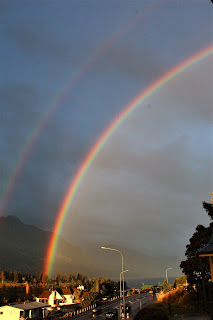



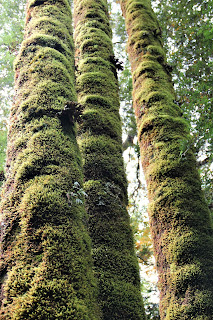





























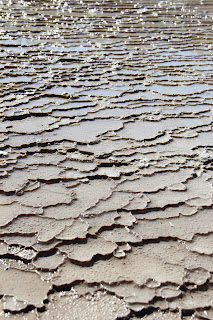







































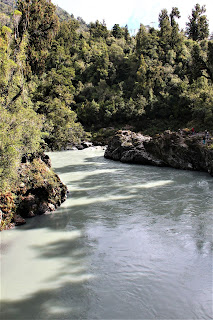















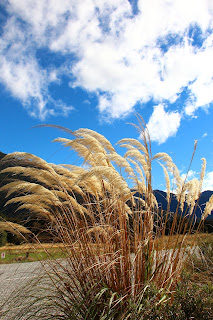












No comments:
Post a Comment